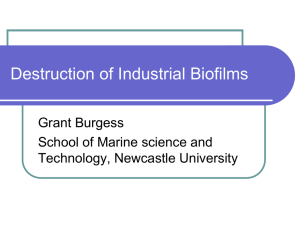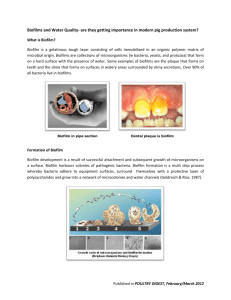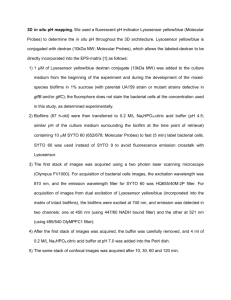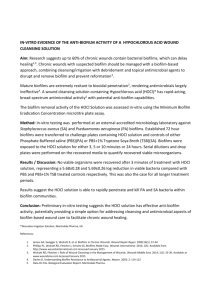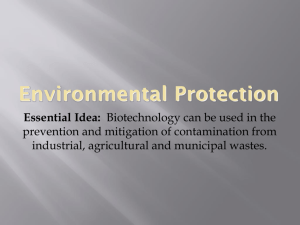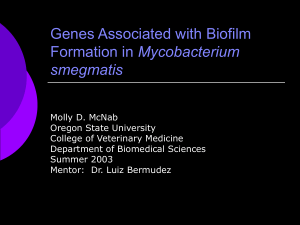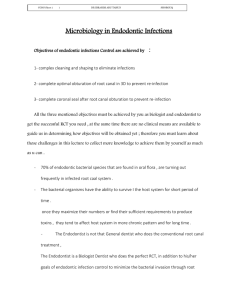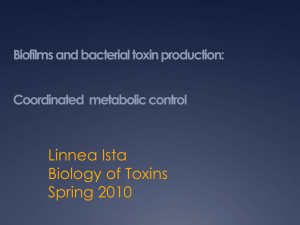BIOFILM DISPERSAL
advertisement
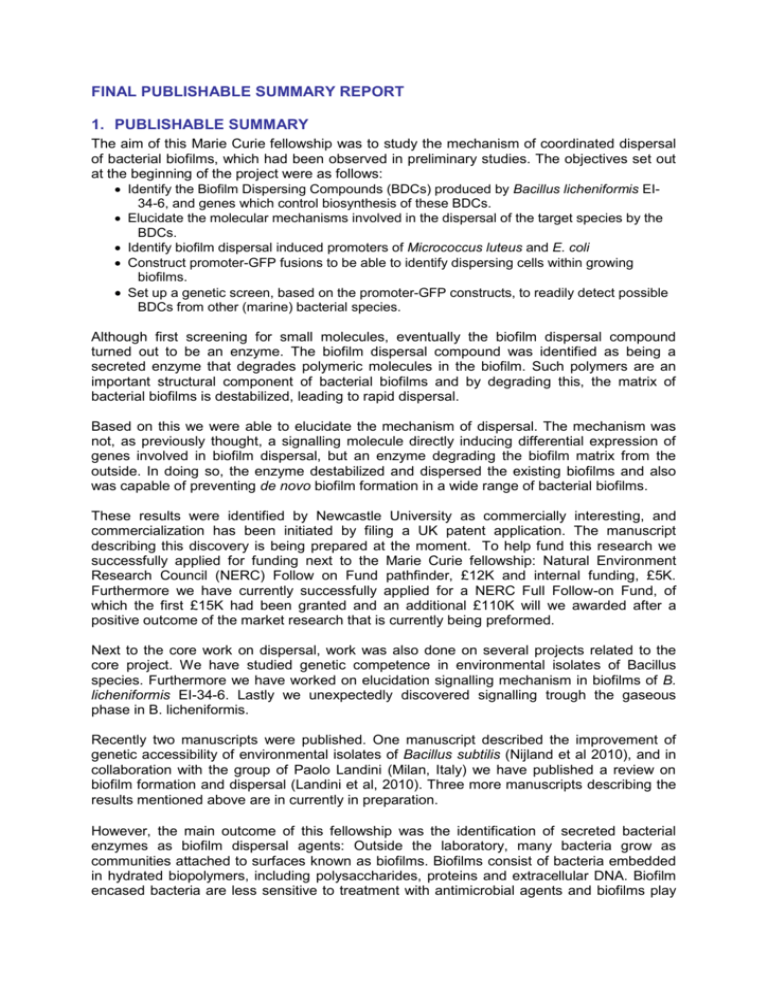
FINAL PUBLISHABLE SUMMARY REPORT 1. PUBLISHABLE SUMMARY The aim of this Marie Curie fellowship was to study the mechanism of coordinated dispersal of bacterial biofilms, which had been observed in preliminary studies. The objectives set out at the beginning of the project were as follows: Identify the Biofilm Dispersing Compounds (BDCs) produced by Bacillus licheniformis EI34-6, and genes which control biosynthesis of these BDCs. Elucidate the molecular mechanisms involved in the dispersal of the target species by the BDCs. Identify biofilm dispersal induced promoters of Micrococcus luteus and E. coli Construct promoter-GFP fusions to be able to identify dispersing cells within growing biofilms. Set up a genetic screen, based on the promoter-GFP constructs, to readily detect possible BDCs from other (marine) bacterial species. Although first screening for small molecules, eventually the biofilm dispersal compound turned out to be an enzyme. The biofilm dispersal compound was identified as being a secreted enzyme that degrades polymeric molecules in the biofilm. Such polymers are an important structural component of bacterial biofilms and by degrading this, the matrix of bacterial biofilms is destabilized, leading to rapid dispersal. Based on this we were able to elucidate the mechanism of dispersal. The mechanism was not, as previously thought, a signalling molecule directly inducing differential expression of genes involved in biofilm dispersal, but an enzyme degrading the biofilm matrix from the outside. In doing so, the enzyme destabilized and dispersed the existing biofilms and also was capable of preventing de novo biofilm formation in a wide range of bacterial biofilms. These results were identified by Newcastle University as commercially interesting, and commercialization has been initiated by filing a UK patent application. The manuscript describing this discovery is being prepared at the moment. To help fund this research we successfully applied for funding next to the Marie Curie fellowship: Natural Environment Research Council (NERC) Follow on Fund pathfinder, £12K and internal funding, £5K. Furthermore we have currently successfully applied for a NERC Full Follow-on Fund, of which the first £15K had been granted and an additional £110K will we awarded after a positive outcome of the market research that is currently being preformed. Next to the core work on dispersal, work was also done on several projects related to the core project. We have studied genetic competence in environmental isolates of Bacillus species. Furthermore we have worked on elucidation signalling mechanism in biofilms of B. licheniformis EI-34-6. Lastly we unexpectedly discovered signalling trough the gaseous phase in B. licheniformis. Recently two manuscripts were published. One manuscript described the improvement of genetic accessibility of environmental isolates of Bacillus subtilis (Nijland et al 2010), and in collaboration with the group of Paolo Landini (Milan, Italy) we have published a review on biofilm formation and dispersal (Landini et al, 2010). Three more manuscripts describing the results mentioned above are in currently in preparation. However, the main outcome of this fellowship was the identification of secreted bacterial enzymes as biofilm dispersal agents: Outside the laboratory, many bacteria grow as communities attached to surfaces known as biofilms. Biofilms consist of bacteria embedded in hydrated biopolymers, including polysaccharides, proteins and extracellular DNA. Biofilm encased bacteria are less sensitive to treatment with antimicrobial agents and biofilms play an important role in virulence of many pathogenic bacteria. In this EU-Marie Curie EIF project we have shown that bacteria use enzymes as an elegant strategy to prevent de novo biofilm formation and disperse established biofilms of both Gram positive and Gram negative bacteria. We demonstrate that these bacterial enzymes are more efficient in dispersing bacterial biofilms than eukaryotic enzymes. We show that microbes actively secrete these enzymes to deliberately influence the biofilm in which they grow. This suggests that their secretion plays an important role in bacterial biofilm development and is a valid competitive strategy in multi-species biofilms. These findings will allow novel strategies to be developed against both the formation and the dispersal of problematic bacterial biofilms in industrial and clinical settings. Contact Details: Fellow: Dr. Reindert Nijland, Afdeling Medische Microbiologie, UMC Utrecht, HP G04.614, Heidelberglaan 100, 3584 CX Utrecht, The Netherlands. r.nijland@umcutrecht.nl, Telephone: +31 (0)88 7557622 Scientist in charge: Prof. Dr. J. Grant Burgess, School of Marine Science and Technology, Newcastle University, Cullercoats, North Shields, NE30 4PZ, grant.burgess@ncl.ac.uk, Telephone +44 191 222 3057


